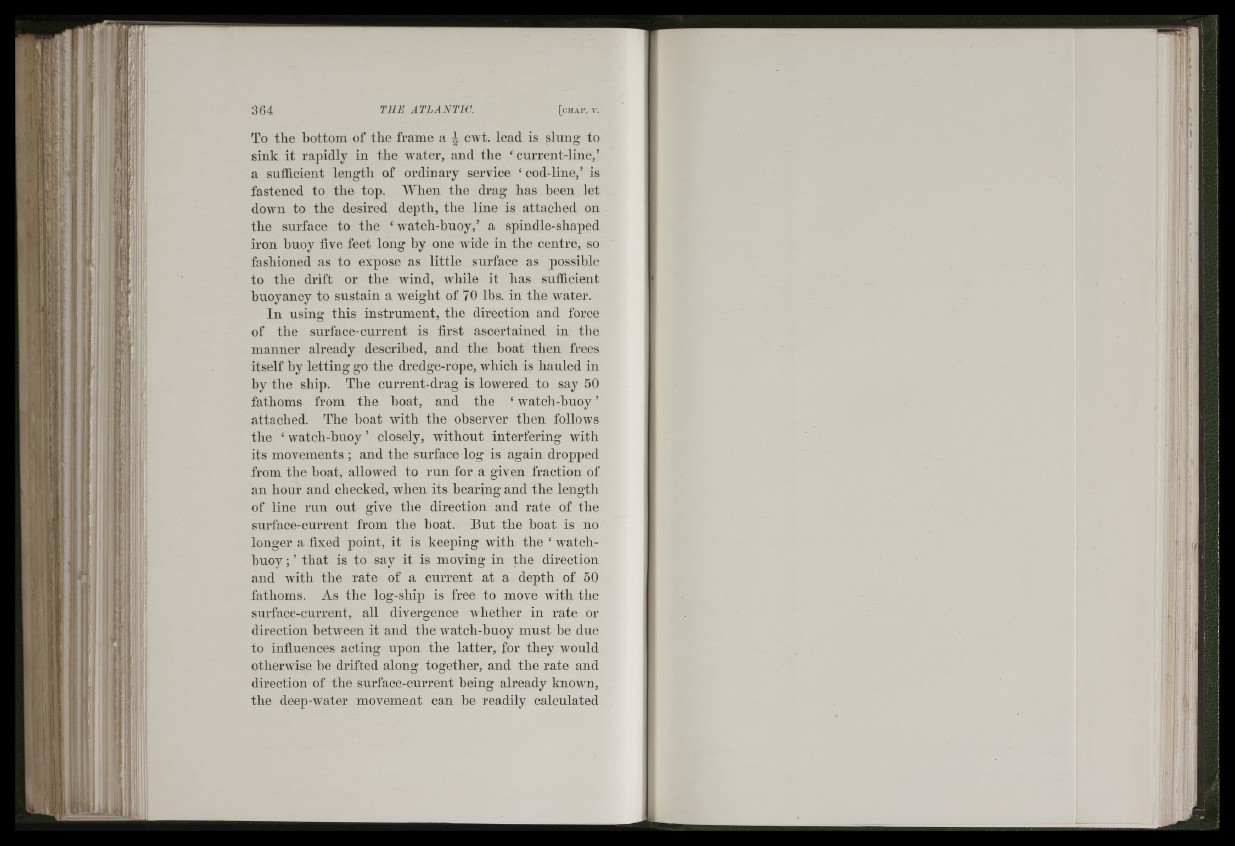
3 6 4
To the bottom of the frame a ^ cwt. lead is slung to
sink it rapidly in the water, and the ‘ current-line,’
a sufficient length of ordinary service ‘ cod-line,’ is
fastened to the top. When the drag has heen let
down to the desired depth, the line is attached on
the surface to the ‘ watch-huoy,’ a spindle-shaped
iron buoy five feet long by one wide in the centre, so
fashioned as to expose as little surface as possible
to the drift or the wind, while it has sufficient
buoyancy to sustain a Aveight of 70 lbs. in the Avater.
In using this instrument, the direction and force
of the surface-current is first ascertained in the
manner already described, and the boat then frees
itself by letting go the dredge-rope, which is hauled in
by the ship. The current-drag is lowered to say 50
fathoms from the boat, and the ‘ watcli-buoy ’
attached. The boat Avith the observer then folloAvs
the ‘ watch-huoy ’ closely, without interfering with
its movements ; and the surface log is again dropped
from the boat, allowed to run for a given fraction of
an hour and checked, when its hearing and the length
of line run out give the direction and rate of the
surface-current from the boat. But the boat is no
longer a fixed point, it is keeping with the ‘ watch-
huoy ; ’ that is to say it is moving in the direction
and Avith the rate of a current at a depth of 50
fathoms. As the log-ship is free to move with the
surface-current, all divergence Avhether in rate or
direction hetAveen it and the Avatch-buoy must be due
to influences acting upon the latter, for they would
otherwise be drifted along together, and the rate and
direction of the surface-current being already knoAAm,
the deep-water movement can he readily calculated
il'li